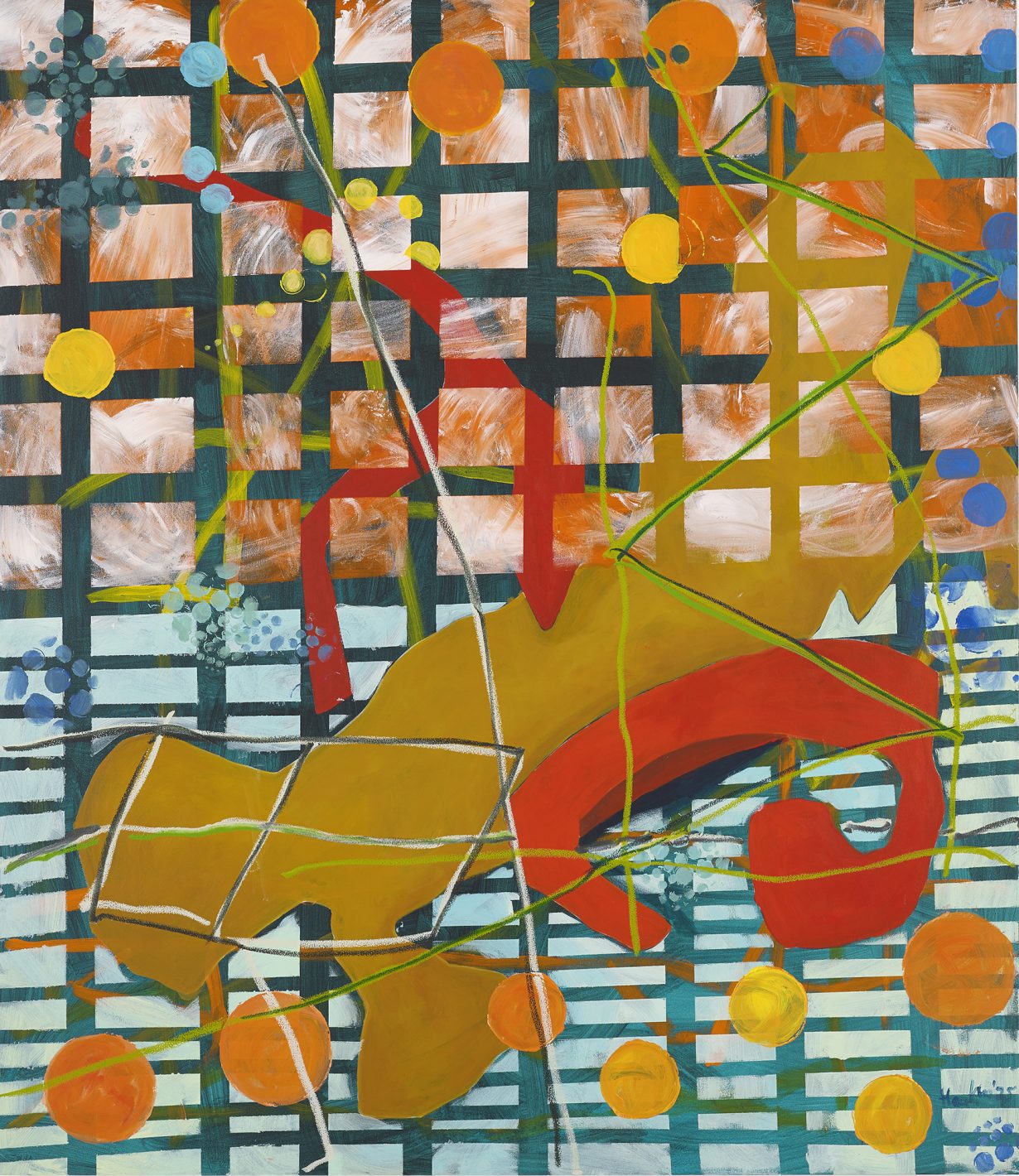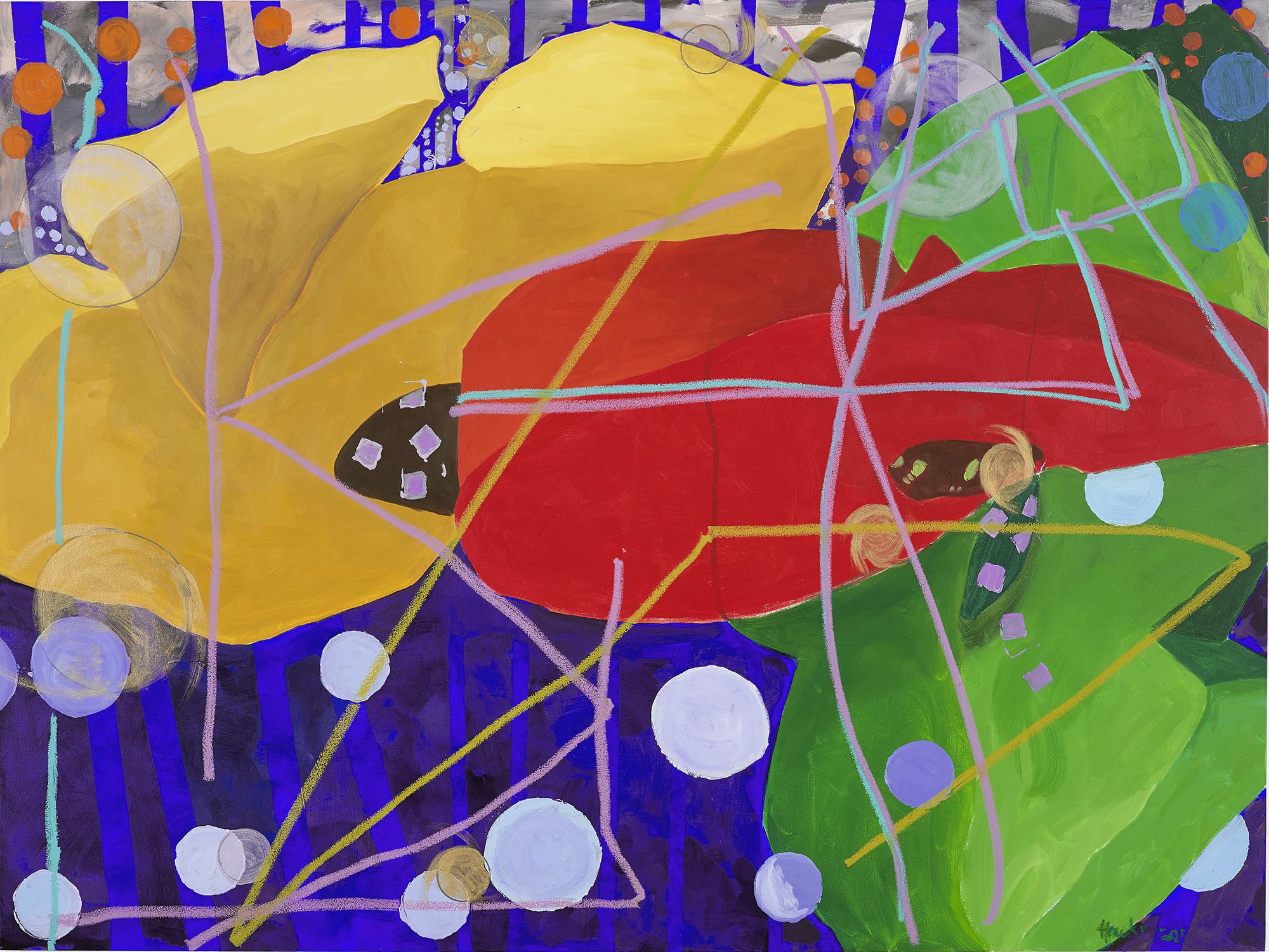The artist’s abstract paintings, with hallmarks of city grid plans, pursue scientific theories and art history to uncover new ways of seeing and representing space
Between 1978 and 1979, when Cynthia Hawkins was in her late twenties, she drew maps of the route from her Upper West Side apartment in New York to the 86th Street subway station, over and over again. The drawings, initially studies for a sculpture titled A Walk in 4D (1979), sought to situate the artist in space-time – a mathematical extension of the concept of space to four dimensions: length, width, depth and time. She was then at the beginning of a five-decade artistic career, predominantly as a painter, through which she continuously found inspiration in scientific theories and art history to uncover new ways of seeing and representing space. In 2023 she started revisiting her early drawings for an ongoing series of abstract paintings that explore memory, subjectivity and mapmaking, of which five new ones feature in this exhibition, alongside three accompanying works on paper.
A grid, reminiscent of New York’s urban plan, is stencilled into all the works on view. In Untitled: Regarding Chapter 4, #10 (all works 2025) it emerges in glistening blue from a plane of pale purple and buttery yellow. In Chapter 4: Maps Necessary for a Walk in 4D #4, it provides guidelines to split the painting horizontally between an orangish and a turquoise half. Whereas grids tend to offer up a way to rationalise and flatten out space – maps, battleship playing boards or the empty planes of 3D rendering – here the lines are like loose warps and wefts through which Hawkins weaves forms and colours. In Chapter 4… #5 three solid shapes in vibrant yellow, green and blue slip between fluid pink-and-white stripes that become thinner as they reach the middle of the canvas, using perspective to funnel our gaze further towards the background. By playing with and around these traditional linear ways of representing space, Hawkins seems to dive deeper into the fundamentals of matter.

Meanwhile, the artist’s actual maps of her past New York walks sit on the surface of each work like a watermark. The lines, similar but not identical from one work to the next, are not immediately recognisable as maps. And with no legend or frame of reference, we can’t be expected to read them as such. Instead, scribbled on the top layer in greasy oil bar, they act as marks carrying the memory of Hawkins’s presence, the same way you might see ‘I was here’ written on a bathroom stall. The turbulent environments she has crafted lie beneath these marks, as if seen through a cracked window. Each is evocative of a different type of setting. Chapter 4… #4 could be an urban landscape; in the blue and purple depths of Chapter 4… #7, among whirlpools and bubbles of varying transparency, might be an ocean floor; next to it, the red and orange horizon of Untitled… #8 feels like an extraterrestrial scene. But this is all up for interpretation. While Hawkins etches her personal experience in the foreground in a manner that is legible only to her, the depth and abstract nature of her paintings leave space for us to add our own routes and associations to the paths she has already marked.
Maps Necessary for a Walk in 4D: Chapter 4 at Hollybush Gardens, London, through 1 November
From the November 2025 issue of ArtReview – get your copy.
